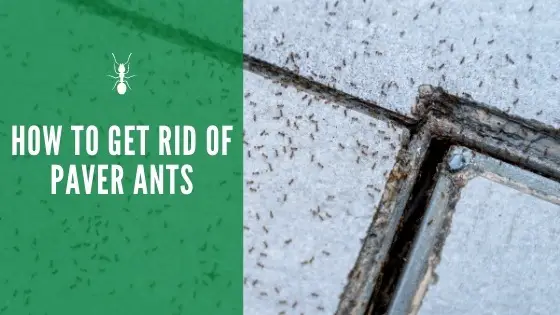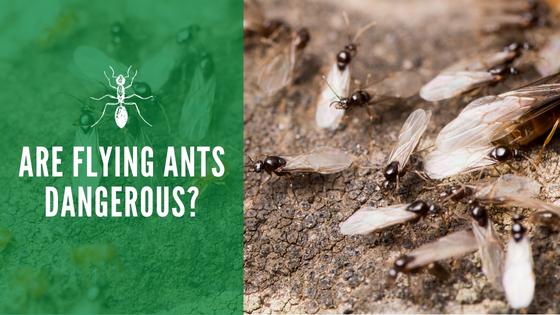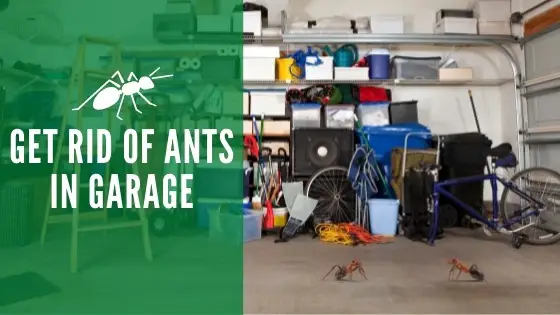How to Get Rid of Paver Ants

If you have pavement stone, you will need to deal with the inevitability of ants roaming around and causing you grief. While the patterns of paver stones can not only provide a nice service to walk on and a beautiful texture for your yard, they can also be home to ant colonies that can easily use the paver stones as a stepping stone to get inside your house.
Ants can come up between your patio pavers, but thankfully, there are several ways to get rid of them. Once you remove the threat of the bugs, then your paved walk and driveways will become yours again!
What Are Pavement Ants?
Pavement ants are originally from Europe, and they are black ants about an ⅛ of an inch long. These ants have two nodes in front of their bellies and two spines on their backs, but you’ll be easily forgiven if you can’t see their features very well.
The main thing you need to watch out for is the little piles of sand near the paving stones, as these mounds are the calling card of the pavement ants.
Pavement ant colonies are bad news because they can get close to your house using cracks in your floorboards, slabs, and the house’s foundation itself. Then they move around your house and start looking around for food to take back to the colonies for their queen. If they like being inside of your home, they will take up residence.
They will congregate and make nests around cold and moist places, underneath floors, and in the wall insulation.
Signs of Paver Ants
The biggest sign that you have a paver ant infestation is if you see strange mounds of soil around your paving stones. These mounds should look like ant colonies and will be arranged above one of the paving stone cracks. You can also see mounds near your foundation if there are any cracks inside it, meaning that the ants have set up a base right near an entrance to your home.
You can also closely inspect the area around the mounds for trails, where the worker ants have been moving back and forth to bring food to the ant colony from your kitchen or another area where food is prevalent.
If you do have pavement ants inside of your home, you don’t need to worry. Most of the time, the ants are harmless and don’t go out of their way to attack humans with their stingers. They don’t carry any diseases and also don’t cause any damage to your paving stones. However, they can contaminate food items if you aren’t careful and store a lot of your food in one place.
How to Get Rid of Pavement Ants
Getting rid of your ant problem comes in two parts. The first part deals with removing the ants from the patio pavers and the second has you making the house ant proof.
To remove ants from the pavers, you don’t want to focus on scattering the workers or destroying the nest. Instead, you need to focus on targeting the ant queen because she is the one keeping the ants in your area. To kill the queen, you can use the ant’s own behavior against them.
Sprinkle a mixture of borax and sugar and sprinkle it between the cracks around your pavers. Ants are drawn to sugar like a moth to a flame, and the worker ants will eat the mixture.
Borax is highly toxic to ants, because it damages their digestive system and their exoskeletons, and the worker ants will bring it back to the queen. Then the queen ant eats the poison, as does most of her followers, and they all die. The colony shrivels up and dies, and no more ant problem.
Sealing Pavers
Some people ask, ‘will sealing pavers prevent ants’ and the answer is yes! Putting a seal on your pavers makes it harder for ants to get into the cracks and start digging around in the dirt. The sealing also locks the many stones that make up the pavers into place and can seal the joint material and prevent the ants from ever getting inside.
If the ants can’t get inside, they will move away from the area and try to find a new home somewhere else! If you can seal up your pavers, then you should do so.
The sealing does require the reapplication of the sealer every three to five years. You will start to see when the paver seal becomes weak, and then you can reapply the sealant to keep the ants out
Ants In The Home
To remove ants in the home, seal any gaps or holes in your foundation that the bugs can get through, and clear out any dark and cool areas that might be a good gathering spot for ants. Placing a sugar and borax ant bait mixture where you suspect the ants are is a good idea, because they will take it back to their colonies and the anthill.
Be mindful of any trails or other heavy trafficked areas by bugs, and then make sure to follow those trails back to the source to get an estimation of where the ants are.
Reclaiming Your Pavers
With just a few simple steps, you can prevent ants from getting into your pavers and, by extension, getting into your house. Sealing the pavers, targeting the queen, and being mindful of any activity in your home is the best way to prevent ant incursions. Then both your walkway and your home will be secure without any trouble or extra effort on your part!
As long as you remain vigilant, everything else should fall into place, and the ants should stay away from your paved walkways for years to come. If the pavement ant infestation has become too serious for you to manage, it is best to get in contact with a pest control professional as soon as possible.



